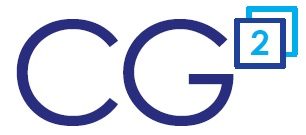There are many different cost-of-goods (COGS) measures available in today’s sophisticated ERPs. The number of calculation options continues to grow as ERPs capture and control more of your operating costs. Here are some insights to help you choose the best COGS for trade promotion analysis:
Don’t include COGS with allocated overhead: We need to only use variable costs when analyzing the efficiency of trade promotions. Let’s use an example item that sells for $20.00 per case. We have an opportunity to sell an incremental 1,000 cases if we can offer a $6.00 per case allowance. Our ERP shows a full-burden COGS of $12.00 per case including overhead. With this $6.00 allowance we’ll make no profit on this event. Should we run the promotion?
To answer this question, we need to know the true variable COGS for this item. For discussion, let’s assume that this example product requires expensive equipment to manufacturer it. From an accounting perspective, the cost of the equipment must be depreciated and allocated to the cost of the items it makes. While the full COGS is $12.00 per case, it only costs us $4.00 to make one more case of this product. The other $8.00 of COGS is allocated depreciation of this machine. This approach is sound, and provides a true picture of this item’s profitability. There are two challenges with using the full-burden COGS for promotion analysis.
First, the cost of the equipment is a ‘sunk’ cost, which shouldn’t be considered when evaluating whether we’re better off manufacturing another 1,000 cases.
Second, the $8.00 of allocated overhead is calculated based on assumptions of how many items we will sell each budget period. What if we sell less than forecast? The $8.00 is too low. If we sell a lot more than forecast, then the $8.00 per item COGS for overhead is too high.
So the answer is yes, from a financial stand point. This hypothetical promotion will generate incremental profit for the company because the dead-net price of the item will be $14.00, and the variable cost per case is only $4.00. This promotion will not cover all of the $8.00 per case allocated costs. However, selling an incremental 1,000 cases may actually lower the allocated overhead costs per case for this item!
Use the anticipated COGS for the promotion, not today’s COGS: This is obvious, but is worth mentioning, especially for perishable products where some of the product’s raw materials vary greatly by time of year. If it’s August and you’re planning a promotion for December, use the anticipated COGS for December to pro-actively evaluate the December promotion. Using the lower COGS in August will make the December promotion look more profitable than it actually will be. When you perform post-promotion analysis of the event, you should use the actual seasonally higher COGS from December rather than an annualized average.
Avoid blended, average COGS for groups of items: When evaluating trade promotion profitability, try to avoid using an average COGS for items that are promoted together. Averages will not help you identify the true promotion profitability, especially when the COGS varies significantly by flavor or type. Trade Promotions are often executed by size, not by flavor. Consider the example promotion with 10 flavors, which vary from 20% to 40% variable margin. Not all 10 flavors will be in distribution in every customer. When you offer a flat 25% line promotion across all 10 flavors, you are losing money on some flavors, and making a 15% variable margin on other flavors. If you don’t use COGS by item, you’ll lose this insight and not know the true efficiency of your trade promotion.
If you use NetSuite as your ERP, we encourage you to look at iTPM, our native SuiteApp for managing your trade promotions.
Alex Ring
President
CG Squared, Inc.
